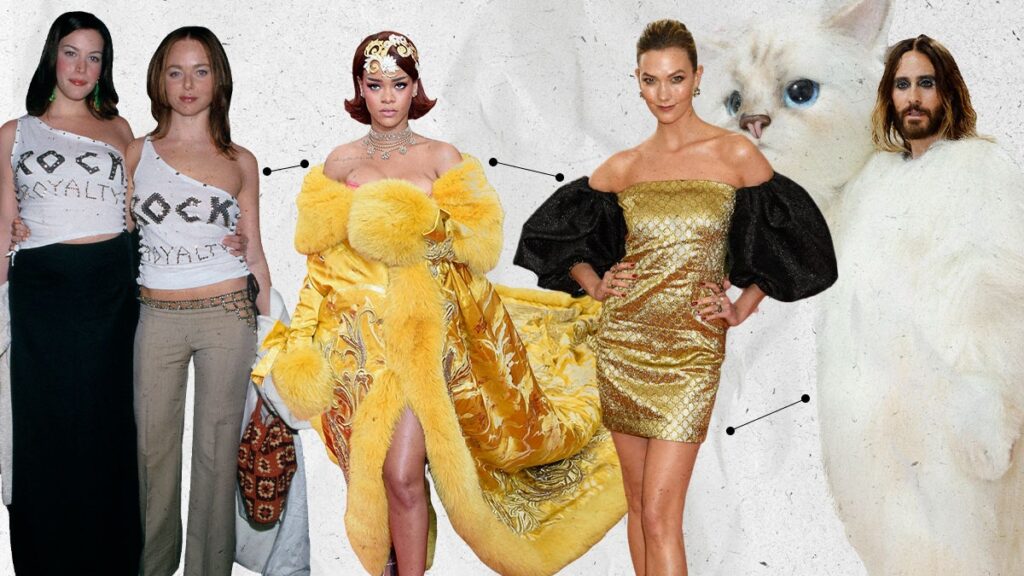This year, The Garden of Time alludes to both the archival and naturalistic elements in the exhibition, but also a short story of the same name written in 1962 by JG Ballard about a count and his wife who reside in a utopian villa of ease and beauty overlooking a garden. For those online, if not everyone’s wearing an archival piece or a floral get-up this year, will they be considered a miss?
The internet of it all
Cue the commentary. Each year, there’s celebrations, shade, criticism and think pieces about the opulence of the evening. The dress code is the easiest and most straightforward way of judging a look. These yay-or-nay verdicts require little fashion knowledge, and that makes the content easy to create and even easier to consume. It’s a perfect storm, reflective of the specific moment of pop culture commentary we’re in.
Prior to Instagram and TikTok (both of which have sponsored recent Met Galas, it’s worth noting), those of us commenting online were talking about the Met, but posts didn’t travel the same way on Tumblr, or you had to visit blogs days later to get the full digest (remember Fashion Spot?). It was also simply not that serious — plus, the commentary was insular, not created with virality as its goal, and oftentimes based on what we found online by the media rather than preceding it.
That changed around 2014 when the ‘Punk’ theme generated more discourse thanks to Miley Cyrus’s sheer number. And by 2015, Rihanna became the first and most-memed Met Gala guest, with her infamous yellow Guo Pei coat filling the entirety of the Met staircase.
When fashion literacy makes us too literal
The problem with the internet becoming the Met dress code police is that it allows little room for the subtle interpretations that make fashion so interesting to look at. What made the ‘Camp’ Met Gala so compelling was that the theme, exacting as it was, left room for interpretation because it hinged on an understanding of an academic and esoteric concept.
But we now live in the age of “method dressing”, which was first introduced by Zendaya and stylist Law Roach to reference her films — from Spiderman to Dune and Challengers — on the red carpet while promoting them. It reached a fever pitch last year on Margot Robbie’s Barbie press tour. The popularity of this style of celebrity dressing is a direct reflection of this Met-dress code obsession. It’s thematic, literal, and easy to interpret: does that green dress count as tennis green? Is that look a direct Barbie reissue? Just because Rihanna dressed as a Pope once doesn’t mean that everyone should show up to the Met in costume, does it?

